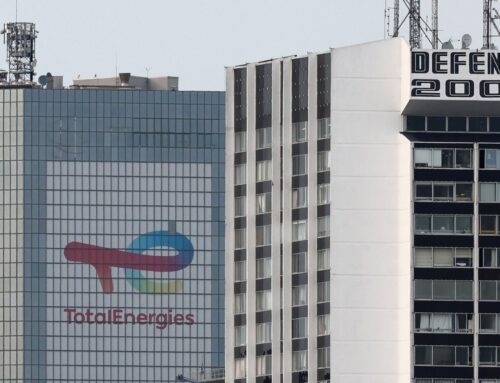As Growth Policy Rewrite Continues, Whitefish Community Development Board Considers Environmental Initiatives
December 21, 2024
The Whitefish Community Development Board continued its work on the city’s growth policy rewrite at its Dec. 19 meeting, focusing its attention on the planning document’s environmental framework. Intended to help guide the city through the next two decades of change, the growth policy was last updated in 2007.
Alan Tiefenbach, a long-range planner for the city who is leading the growth policy rewrite process, told the board that the growth policy is required to include inventory, maps and descriptions of the natural environment, and must include a summary of conditions and real or potential threats to natural amenities like soil, surface water, groundwater, aquifers, wildlife, wildlife habitat, and wildlife corridors, as well as a description of the role that natural resources and the environment play in the local economy.
“This is the most complicated one,” Tiefenbach said, referring to how the environmental section compares to the various sections of the growth policy that are being rewritten.
Work on this section of the growth policy rewrite has been ongoing since May, and a combination of 12 different agencies, including local governments and nonprofits, were consulted.
As the city embarks on a multi-year process to rewrite the growth policy for the first time in 17 years, it is sharing its work and engaging with the public. Updates, documents and comments can be viewed on the website https://engagewhitefish.com/vision-whitefish-2045. The environmental section contains subsections pertaining to air quality, water quality, wildlife and habitat and climate change, which Tiefenbach summarized for the board this week. It will be the first completed draft chapter of the plan released for public review.
The updated policy will reflect changes to the environment as well as an evolving public awareness. For example, while Tiefenbach said the old growth policy focused on air quality impacts from unpaved roads, the city has shifted its focus to impacts from open burning, vehicle emissions and wildland fires.
Some of the goals and objectives in the draft include continued exploration of programs and regulations to further improve air quality in Whitefish, as well as measures the city could take to promote public transit and other automobile alternatives, encouraging electric versus fuel-powered equipment and promoting anti-engine-idling policies.
Asked about the possibility of an anti-idling policy, and how that would work, Tiefebach said it could be enacted through a zoning amendment. However, he emphasized that when the growth policy is done, the goals will be implemented strategically over time, as opposed to going into effect immediately.
The water section of the draft, Tiefenbach said, is much more significant in length than the air section. He referenced Whitefish Lake Institute’s growth and the city’s ability to use the nonprofit water-quality research center as a resource to build out the section, which accounts for water quality regulations, lakeshore regulations and impacts to the city’s water quality, including septic leachate, train derailments, aquatic invasive species, interceptor trenches, the Haskill Basin Conservation Easement, new treatment plants, stormwater runoff, and golf courses.
Tiefenbach said the city has set environmental standards for critical areas and a water quality protection ordinance that governs steep slope development, erosion control and stormwater runoff near water bodies. The city also created buffer zones and setback requirements for streams, wetlands and shoreline; updated the city floodplain ordinance; and received grants and worked with the Whitefish Lake Institute to ensure baseline monitoring of water quality in Whitefish Lake.
The draft section also calls for working with and supporting nonprofit conservation groups to preserve and maintain critical waterfront sites as open space. Additionally, it lists as an objective initiating a public information campaign to educate community members about how fertilizers and pesticides can impact water quality in Whitefish’s lakes and streams.
It also mentions encouraging local golf courses to join the Audobon Cooperative Sanctuary Certification Program. The section draft also lists among its goals and objectives encouraging local golf courses to develop a site assessment and environmental plan, minimize chemical contamination and water usage, and perform periodic testing of soil, groundwater and surface water for contamination. It also calls for continued efforts to implement and monitor programs to neutralize the threat of aquatic invasive species.
As he introduced the wildlife section, Tiefenbach said the existing growth policy makes frequent mention of protecting critical habitat, but offers little in the way of policy.
“What we tried to do with this update is to consolidate things and make them easier to read,” Tiefenbach said. “So again, there’s a lot of mentions about effects of development or preserving habitat, but we did not have the regulations in effect then that we have now.”
The draft of the new wildlife section of the growth policy discusses protecting habitat, development impact on wildlife, endangered species, living with wildlife with an emphasis on bear and deer conflicts and noxious weeds. New wildlife-related goals and objectives in the draft include working with partner organizations such as Montana Fish, Wildlife and Parks to develop guidelines or regulations for development proposals in proximity to wildlife habitats, ranges and migration routes, while not precluding development and still respecting individual property rights.
Tiefenbach said it also lists as a goal minimizing the use of fencing that is exclusionary or dangerous to wildlife except when required for human safety, protecting at-risk crops or for domestic animal containment. Other goals and objectives include supporting FWP’s “Living with Wildlife Program” to reduce conflicts between wildlife and people, continued support for the city fruit gleaning program, encouraging the use of animal resistant garbage cans in unincorporated areas, and continuing to enforce noxious weed regulations.
Tiefenbach said the 2007 growth policy has little on climate change, but it has some mention of sustainability, and the city has implemented growth policy goals on the topic including adopting a climate action plan and creating a climate action plan standing committee.
The draft climate change section of the growth policy lists goals and objectives including continued commitment to the city’s climate action plan, creating an implementation schedule which outlines the city’s responsibility. It also aspires to hit electrification goals in the plan to lower greenhouse gas emissions, promote valley-wide public transportation, and provide incentives for “climate-smart” development practices.
While the board offered some suggestions over the course of the nearly 90-minute meeting — like adding a deer management plan to try and mitigate the spread of chronic wasting disease, and providing guidance on the use of solar panels and green energy alternatives — the decision was ultimately made to continue discussion at a January meeting because the need for more time, and a desire to have more board members present. Toby Scott, Whitney Beckham and John Middleton were not in attendance at the recent meeting. As Steve Qunell, the board chair, said toward the close of the meeting, Middleton does not plan to remain on the board, and so they are hoping to have a new member appointed in the coming year.
Search
RECENT PRESS RELEASES
Related Post




